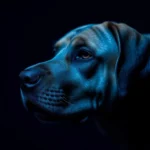
Understanding the classification of animals helps us comprehend the complexities of biodiversity. Among the intriguing questions that arise in the animal kingdom is the classification of the fox. Is a fox a cat or a dog? This question might seem simple at first glance, but it delves into the realms of taxonomy, evolution, and behavior. This article will clarify the classification of foxes, their relation to both canines and felines, and explore their unique characteristics.
Understanding Animal Classification
The Linnaean System of Classification
The Linnaean system of classification is a hierarchical structure used by biologists to categorize living organisms. It includes several ranks: kingdom, phylum, class, order, family, genus, and species. This system is crucial for understanding the relationships between different organisms and their evolutionary history. For example, all animals are classified under the kingdom Animalia, which further divides into various phyla, classes, and orders, based on shared characteristics.
Carnivora Order
Foxes belong to the order Carnivora, which is primarily characterized by species that are predominantly carnivorous, although some members have adapted to omnivorous diets. Members of this order, such as dogs, cats, bears, and seals, share specific adaptations that facilitate a carnivorous lifestyle, including specialized teeth and digestive systems. Understanding their placement in this order helps clarify the initial question about foxes and their classification.
The Canidae Family
Characteristics of the Canidae Family
Within the order Carnivora, foxes fall under the family Canidae, which includes domestic dogs, wolves, coyotes, and other canids. The Canidae family is characterized by several traits, such as:
- Physical Traits: Canids typically have elongated muzzles, non-retractable claws, and bushy tails. These features are well-suited for their predatory lifestyle.
- Behavioral Traits: Canids are known for their social structures, communication methods, and hunting strategies. Many species within this family exhibit pack behavior, although foxes are more solitary.
The Role of Foxes in the Canidae Family
Foxes, specifically those in the genus Vulpes, are a distinct group within the Canidae family. They are often recognized for their adaptability and cunning nature. Foxes share many physical traits with domestic dogs but differ in behavior and social structure. While domestic dogs are often bred for specific traits and behaviors, foxes have maintained a more wild and independent nature.
The Felidae Family
Characteristics of the Felidae Family
In contrast, the Felidae family includes all species commonly referred to as cats, such as lions, tigers, and domestic cats. Felids have unique characteristics that set them apart from canids:
- Physical Traits: Felids typically possess retractable claws, a more flexible body structure, and specialized teeth designed for grasping and slicing.
- Behavioral Traits: Cats are often solitary hunters, relying on stealth and agility. They tend to have different social structures than canids, often being more territorial.
Distinctions Between Foxes and Cats
Despite some superficial similarities between foxes and cats, such as their size and agility, several key differences clarify why foxes do not belong to the Felidae family:
- Anatomy: Foxes have non-retractable claws, which make them more adept at running than climbing. In contrast, cats have retractable claws that assist in climbing and capturing prey.
- Behavior: Foxes exhibit behaviors that are more akin to canids, including vocalizations and social interactions. They are known to communicate through barks, screams, and growls, while felids typically communicate through body language and softer vocalizations.
Evolutionary Background
The Evolution of Canids
The evolutionary history of canids shows that they diverged from other carnivorous mammals around 40 million years ago. The earliest canids were similar to modern-day wolves and foxes, but over time, they adapted to various environments. Foxes specifically evolved to fill ecological niches that required adaptability and cunning, allowing them to thrive in diverse habitats.
Comparison with Felids
On the other hand, felids followed a different evolutionary path. They adapted to a stealthy predation strategy, developing unique hunting techniques and physical adaptations suited for ambush hunting. This divergence is crucial in understanding why foxes align more closely with dogs than with cats.
Behavioral Insights
Social Structures of Foxes
Foxes typically have a varied social structure, often living solitarily or in small family groups. Unlike domestic dogs, which exhibit pack behavior, foxes are more independent. They establish territories and communicate through a range of vocalizations, body language, and scent marking. This independence is one of the many traits that differentiate them from canids like wolves, which rely heavily on social structures for hunting and survival.
Hunting and Feeding Habits
Foxes are considered omnivores, with diets that vary based on available resources. They primarily hunt small mammals, birds, and insects but will also consume fruits and vegetables. Their hunting style is characterized by stealth and agility, resembling that of cats when stalking prey. However, unlike cats, foxes often scavenge and hunt in a more opportunistic manner, showcasing their adaptability as canids.
Cultural Representations
Foxes in Folklore and Mythology
Throughout history, foxes have held a significant place in folklore and mythology across various cultures. In many instances, they are depicted as cunning, clever creatures. For example, in Japanese folklore, the kitsune is a mythical fox capable of shape-shifting and possessing magical powers. Similarly, in Western literature, foxes often embody trickster qualities, symbolizing intelligence and adaptability.
Comparison with Cats and Dogs in Culture
Both cats and dogs also feature prominently in cultural narratives. Dogs are often portrayed as loyal companions, while cats are frequently seen as mysterious and independent creatures. Each family has its own unique representations in myths and stories, contributing to their cultural significance. Understanding these cultural narratives provides a broader perspective on how society views these animals and their respective classifications.
Conclusion
In summary, the question of whether a fox is a cat or a dog can be answered with clarity: foxes are members of the Canidae family, making them closely related to dogs, wolves, and other canids. While they may share some physical traits with felids, significant differences in anatomy, behavior, and evolutionary history set them apart. The classification of animals is a fascinating topic that reveals the complexity of life on Earth and the intricate relationships among species.
Continuing to explore the diverse world of animal classifications not only enhances our understanding of biodiversity but also enriches our appreciation for the natural world around us. Whether you’re a wildlife enthusiast or simply curious about animal relationships, the journey through classification is an enlightening one.









